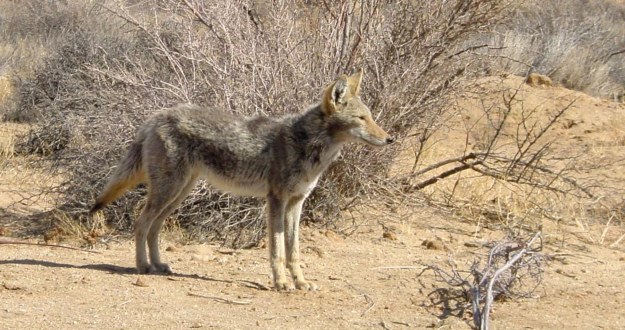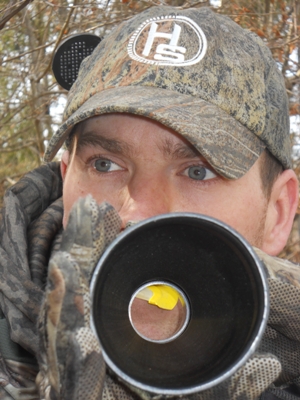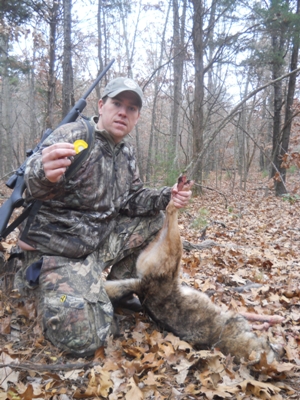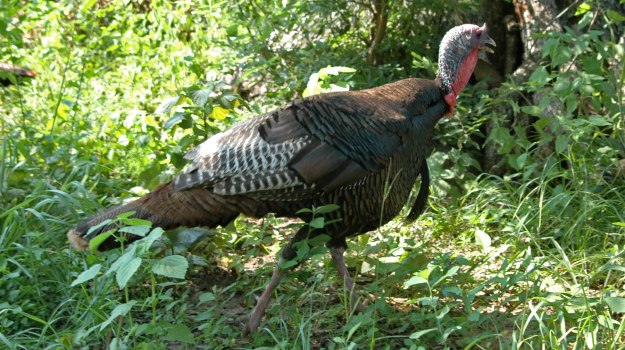by Heath Wood | Mossy Oak ProStaff

For several years my style of predator hunting was setting up an electronic caller playing a rabbit distress and waiting it out. It wasn't until recent years, after attending a predator hunting classic with a former World Predator Calling Champion that I realized if I wanted to take more coyotes my hunting style needed to change.
Throughout the weekend I listened to other hunters repeatedly talking about howling at coyotes and about what coyotes are doing at certain points of the year. I also noticed that a lot of the hunters were using hand calls to make the distress sounds. This was beautiful music to my ears because I have a personal obsession with calling in animals by using calls. Since I was a child, I have called in turkeys, deer, squirrels, and doves just to name a few. Since childhood, I have tried to continuously further my education and have since learned how to use duck, elk, crow, and owl calls. Something that suddenly seemed so obvious had me asking myself why had I not been using these hand calls for predator hunting all along?
At this predator hunting show I watched as the above mentioned World Predator Calling Champion used a diaphragm style call to howl for coyotes. Instantly I thought to myself, "I have got to learn how to do this." As the days passed, I looked back on what I had learned during my eye-opening weekend at the show. Two things stood out above all else. The first thing was that I needed to learn how to use hand and diaphragm style calls. The second was that I needed to learn more about coyotes in general. And that's exactly what I set out to do.
 I began learning what sounds a coyote makes, why they make them and what sounds can be the most effective when trying to call them within gun range. There are several types of howls, whines, yips, and whimpers in a coyote’s vocabulary that upon hearing will make them respond. In the past, I have used an open reed style howler to locate coyotes. I have always assumed they were used to make a coyote howl back at you and after receiving a reaction from the coyote, you move in closer and begin calling him in, such as in turkey hunting. I have found that this is not exactly true. Don't get me wrong, you can use this method and it could be effective, but there is so much more you can do with howling.
I began learning what sounds a coyote makes, why they make them and what sounds can be the most effective when trying to call them within gun range. There are several types of howls, whines, yips, and whimpers in a coyote’s vocabulary that upon hearing will make them respond. In the past, I have used an open reed style howler to locate coyotes. I have always assumed they were used to make a coyote howl back at you and after receiving a reaction from the coyote, you move in closer and begin calling him in, such as in turkey hunting. I have found that this is not exactly true. Don't get me wrong, you can use this method and it could be effective, but there is so much more you can do with howling.
I have learned that I love using a soft subtle howl when I first set up. This introduces a coyote into the area, and then I begin a sequence of distress sounds to bring a coyote in. But upon researching coyotes I have learned that by howling first, coyotes think they have a competitor vying for their meal. There is another type of howling called a challenge howl. This howl is a more aggressive sound, which entices other coyotes for dominance. After learning how to do a lot of these sounds on a diaphragm style howler, I have increased my success rate tremendously.
On a recent hunt in southern Missouri, I found myself set up in a wooded draw where I had heard a lot of coyotes the previous deer season while sitting in my stand. It was late fall, cold with very little wind, a perfect morning to call coyotes. I began by making two soft howls on a double reed diaphragm howler. After a few minutes of silence, I began a low volume rabbit in distress on a Johnny Stewart Primal Series Cottontail Closed Reed Caller. Ten minutes or so passed and suddenly I caught movement directly in front of me. I focused in on the movement and sure enough, it was a large male coyote trotting in to my call.
When this large Missouri coyote had made it to the 50-yard marker, I let out a quick howl and dialed in on him with my .243 rifle. Unfortunately, my aim was off. After my first shot missed, I began a pup distress sound on my diaphragm howler. The coyote again stopped this time about 70 yards out. My second shot connected. If it wasn't for the howler already being in my mouth, I would not have been able to stop him for the second shot. That is the moment I realized why so many hunters recommend using these types of calls.
 Being a diehard turkey and deer hunter has made me love an up-close style of hunting. The challenge of using hand calls while predator hunting has led me to the same excitement. Using a shot gun or letting a coyote get close with a rifle has become a new passion of mine.
Being a diehard turkey and deer hunter has made me love an up-close style of hunting. The challenge of using hand calls while predator hunting has led me to the same excitement. Using a shot gun or letting a coyote get close with a rifle has become a new passion of mine.
There are, however, a few things that require more attention when doing this style of hunting. Proper attire is a must. Any serious hunter knows that the right hunting clothes matter, which is why I make sure I am clothed head to toe in Mossy Oak camouflage. When hunting open areas, I wear Mossy Oak Brush, and when hunting wooded areas I wear Mossy Oak Break-Up Infinity. Another attention to detail is using a complete scent control system, which consists of washing camo in Scent A Way laundry detergent, storing camo in a scent-safe bag, taking showers using Scent A Way soaps and shampoos and dressing in the field followed by spraying yourself along with all hunting gear with Scent A Way spray. Lastly always have a diaphragm howler in your mouth while hunting. You never know when you need to make one last call to make that shot.
Paying attention to a few details, along with a little practice on some calls can make any predator hunter enjoy this action-packed style of predator hunting for years to come. To me it brings out that personal satisfaction of “I called that coyote in," not some recording blasting out of a speaker. So, get out and try hand and mouth calling coyotes.




























